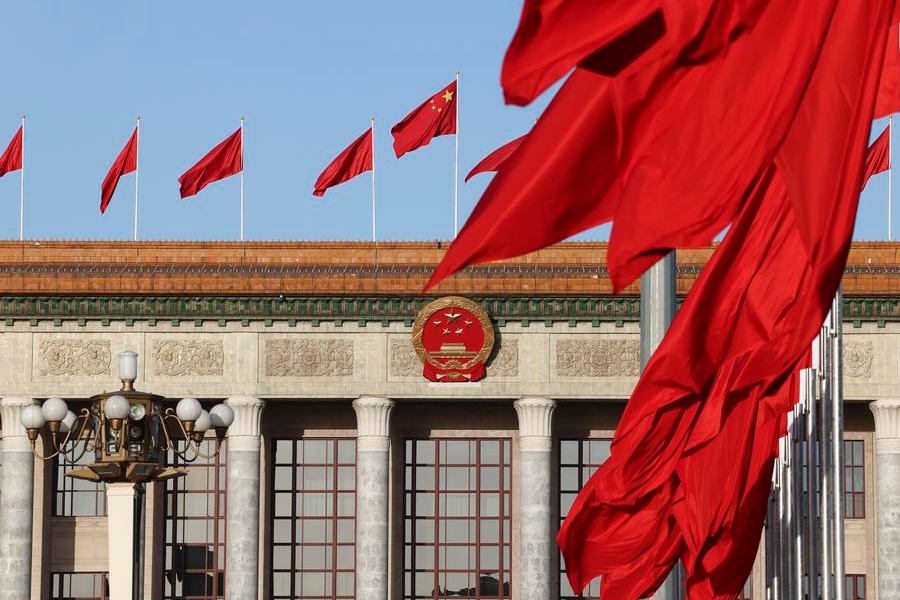Nation can help lead global fight against climate change


President Xi Jinping's pledge on Saturday of China's further commitments to tackling global climate challenges consolidates his earlier announcements for the country to peak emissions before 2030 and achieve carbon neutrality before 2060.
It is crucial to note that the gains to China and the world from climate action are far greater in the immediate years than in the later years, when the socioeconomic cost of mitigation would have risen exponentially.
Xi told the virtual Climate Ambition Summit that by 2030, China will lower its carbon dioxide emissions per unit of GDP by over 65 percent from the 2005 level, increase the share of nonfossil fuels and the forest stock volume, and further boost wind and solar power. These will help reverse China's high carbon intensity and reliance on fossil fuels, which makes its coal industry one-half of the world's capacity.
And, Xi said, "China always honors its commitments."
China has a high exposure to climate disasters and great vulnerability to their consequences. Recent flooding in Southwest China is a grim reminder of the risks of extreme weather events.
There is a national security impact in all of this, and this may be reflected in what President Xi refers to as "the gray rhino risk" (a threat that is highly likely yet ignored). According to scientific projections, climate change is a growing danger for which solutions are not automatic, and it needs concerted and sustained action by the government, businesses and households.
China has promoted low-carbon energy, especially solar and wind. At the same time, the overall climate trends globally are headed the wrong way.
Despite lower emissions worldwide after COVID-19, carbon dioxide, the chief culprit in global warming, was a record 414.4 parts per million in July this year because of past accumulation. The world's three top carbon emitters-China, the United States and India-account for one-half of emissions.
China's role in climate change is also cross-boundary, as the world's largest financier and builder of fossil fuel and renewables infrastructure worldwide.
China has been on track to achieving its 2030 peak carbon intensity target and expanding the nonfossil fuel share in energy. The country has also made efficiency improvements in State-owned enterprises, agriculture, industry and digital transformation.
But as the economy rebounds to pre-pandemic production levels, it is vital to use the stimulus to cut back on coal and switch to low-carbon infrastructure and renewable energy.
A much faster transition to a low-carbon economy can be facilitated by a rollout of domestic carbon taxes and trading. The pilot projects have been successful, and it is time now to roll them out nationwide.
China can also use its capability as a large buyer in international trade to impose a carbon tariff. China could use its global economic position to build a climate coalition with its Asian and global trading partners, helping the world order to adopt a regimen of carbon prices and transnational carbon tariffs. The gains from carbon pricing could be enormous, and the resulting growth path would be far more sustainable-financially, economically and environmentally.
The US, India and other nations also need to do their part, and with a sense of urgency. Overall, the benefits of implementing the Paris Agreement on climate change far outweigh the costs.
Capital investments to replace fossil fuels by renewables to keep global temperature rise below the dangerous threshold of 1.5 C is $2.4 trillion a year through 2035. By one estimate, averted global indemnities could be $150 trillion to $792 trillion by 2100, or upward of four times the investment.
Moreover, the link between climate action and domestic pollution cannot be missed. A stronger climate agenda would be complementary to cutting domestic air pollution that directly harms health and cuts life expectancy. By providing better protection to forests, wetlands and mangroves, climate action also has salutary effects on China's precious biodiversity.
With mounting evidence on the interplay between nature, human health and climate change, the 14th Five-Year Plan (2021-25) will do well to give top priority to environmental protection.
The recent global regimen of climate mitigation has been stalling, and global governance on ecology needs improving. China's move has had a snowball effect, with Japan and South Korea announcing similar initiatives. The US under Joe Biden as its next president will be far more strident on climate action. This is an opportunity for China to take far-reaching measures domestically, while inviting the US and others to join the fight.
The author is a visiting professor at the Lee Kuan Yew School of Public Policy in Singapore, a former senior vice-president at the World Bank, and author of Climate Change and Natural Disasters: Transforming Economies and Policies for a Sustainable Future.
The views do not necessarily reflect those of China Daily.
































